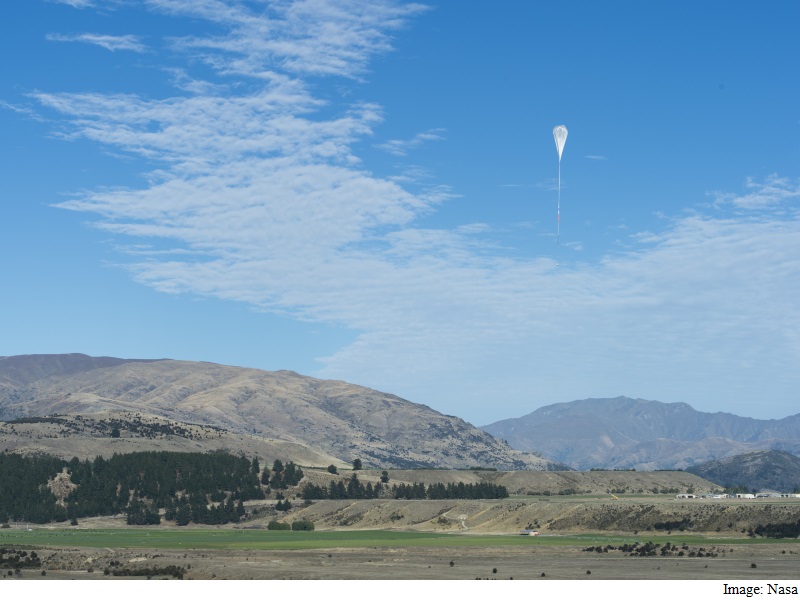- Home
- Science
- Science News
- Nasa Launches Near Space Monitoring Balloon From New Zealand
Nasa Launches Near-Space Monitoring Balloon From New Zealand

The launch marks the fifth attempt to get the massive balloon airborne, with previous bids thwarted by bad weather, Nasa said in a release.
Long-duration balloon flights at constant altitudes play an important role in providing inexpensive access to the near-space environment for science and technology.
The 532,000 cubic metres (18.8 million cubic feet) balloon is expected to circumnavigate the globe about the southern hemisphere's mid-latitudes once every one to three weeks, depending on wind speeds in the stratosphere, Nasa said. The aim is for it remain airborne for more than 100 days.
According to Nasa the balloon's operational float altitude is 33.5 kms (20.8 miles) and it will be visible from the ground, particularly at sunrise and sunset, in the southern hemisphere's mid-latitudes, such as Argentina and South Africa.
Nasa's balloon experts at its Columbia Scientific Balloon Facility and Nasa's Wallops Flight Facility, Virginia, will control balloon flight operations throughout the mission.
The current record for a Nasa super pressure balloon flight is 54 days. Tuesday's launch was the second super pressure balloon mission from Wanaka. The first launch occurred March 27, 2015, flying 32 days, 5 hours, and 51 minutes.
© Thomson Reuters 2016
Get your daily dose of tech news, reviews, and insights, in under 80 characters on Gadgets 360 Turbo. Connect with fellow tech lovers on our Forum. Follow us on X, Facebook, WhatsApp, Threads and Google News for instant updates. Catch all the action on our YouTube channel.
Related Stories
- Samsung Galaxy Unpacked 2025
- ChatGPT
- Redmi Note 14 Pro+
- iPhone 16
- Apple Vision Pro
- Oneplus 12
- OnePlus Nord CE 3 Lite 5G
- iPhone 13
- Xiaomi 14 Pro
- Oppo Find N3
- Tecno Spark Go (2023)
- Realme V30
- Best Phones Under 25000
- Samsung Galaxy S24 Series
- Cryptocurrency
- iQoo 12
- Samsung Galaxy S24 Ultra
- Giottus
- Samsung Galaxy Z Flip 5
- Apple 'Scary Fast'
- Housefull 5
- GoPro Hero 12 Black Review
- Invincible Season 2
- JioGlass
- HD Ready TV
- Laptop Under 50000
- Smartwatch Under 10000
- Latest Mobile Phones
- Compare Phones
- Huawei Nova 15
- Huawei Nova 15 Pro
- Huawei Nova 15 Ultra
- OnePlus 15R
- Realme Narzo 90x 5G
- Realme Narzo 90 5G
- Vivo S50 Pro Mini
- Vivo S50
- Asus ProArt P16
- MacBook Pro 14-inch (M5, 2025)
- Huawei MatePad 11.5 (2026)
- OnePlus Pad Go 2 (5G)
- OnePlus Watch Lite
- Just Corseca Skywatch Pro
- Acerpure Nitro Z Series 100-inch QLED TV
- Samsung 43 Inch LED Ultra HD (4K) Smart TV (UA43UE81AFULXL)
- Asus ROG Ally
- Nintendo Switch Lite
- Haier 1.6 Ton 5 Star Inverter Split AC (HSU19G-MZAID5BN-INV)
- Haier 1.6 Ton 5 Star Inverter Split AC (HSU19G-MZAIM5BN-INV)

















